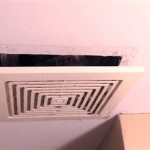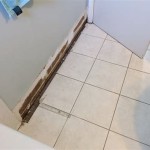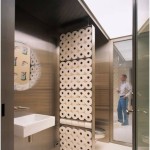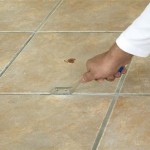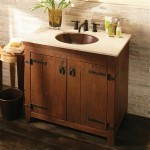What Is A 3/4 Bathroom?
The term "3/4 bathroom" often causes confusion in real estate and home renovation discussions. Understanding its definition and implications can significantly impact property value assessments and renovation planning. This article will explore the characteristics of a 3/4 bathroom, differentiating it from other bathroom types and highlighting its advantages and disadvantages.
Key Features of a 3/4 Bathroom
A 3/4 bathroom is defined by its fixture configuration: a toilet, a sink, and a shower stall. It lacks a bathtub, differentiating it from a full bathroom. This configuration offers a practical balance between functionality and space efficiency. The absence of a bathtub allows for a smaller footprint, making it a suitable option for guest rooms, smaller homes, or additions where space is limited.
Distinguishing Between Bathroom Types
Understanding the different bathroom classifications is crucial. The following delineates the standard bathroom types:
- Full Bathroom: Includes a sink, toilet, bathtub, and shower (often combined as a shower/tub combo).
- 3/4 Bathroom: Includes a sink, toilet, and shower stall (no bathtub).
- Half Bathroom/Powder Room: Includes only a sink and a toilet.
- 1/4 Bathroom: Contains only a single fixture, either a toilet or a sink/shower.
This distinction is essential for accurate property listings and comparisons. A home advertised with two bathrooms, one of which is a 3/4 bath, offers different functionality compared to a home with two full bathrooms.
Advantages of a 3/4 Bathroom
The advantages of a 3/4 bathroom are numerous, making it a popular choice in many residential settings.
- Space Efficiency: The absence of a bathtub significantly reduces the required square footage, making it ideal for smaller homes or areas where maximizing space is a priority.
- Cost-Effectiveness: Smaller size translates to lower installation costs due to reduced material and labor requirements. This makes adding a 3/4 bathroom a more budget-friendly option compared to a full bathroom.
- Accessibility: Shower stalls, particularly those with curbless entries, can be easier to access for individuals with mobility limitations compared to stepping over a bathtub’s edge.
- Water Conservation: Showers typically use less water than filling a bathtub, potentially leading to lower water bills and reduced environmental impact.
Disadvantages of a 3/4 Bathroom
While a 3/4 bathroom offers various benefits, it also presents some potential drawbacks to consider.
- Resale Value: Although a well-designed 3/4 bathroom can be a valuable asset, it may not add as much resale value as a full bathroom, especially in markets where bathtubs are highly desired.
- Limited Functionality: The lack of a bathtub eliminates the option of soaking baths, which may be a preference for families with young children or individuals who enjoy relaxing baths.
Design Considerations for a 3/4 Bathroom
Careful planning and design are essential for maximizing the functionality and aesthetics of a 3/4 bathroom. Consider the following:
- Shower Size and Type: Selecting the appropriate shower size and type impacts both functionality and comfort. Consider a larger shower stall if space allows for a more luxurious experience.
- Ventilation: Adequate ventilation is critical in a bathroom to prevent moisture buildup and mold growth. Install a properly sized exhaust fan to ensure effective air circulation.
- Lighting: Well-placed lighting enhances both visibility and ambiance. Combine ambient, task, and accent lighting for optimal illumination.
- Storage: Incorporate smart storage solutions to maximize space utilization and maintain a clutter-free environment. Utilize wall-mounted cabinets, shelves, and niches to store toiletries and towels.
3/4 Bathrooms in Different Settings
3/4 bathrooms can serve diverse purposes depending on their location within a property.
- Guest Suites: Providing a dedicated 3/4 bathroom for guests offers privacy and convenience without requiring the footprint of a full bath.
- Small Apartments or Condominiums: 3/4 bathrooms are a space-saving solution in smaller living spaces.
- Basements: Adding a 3/4 bathroom to a finished basement enhances functionality and value.
- Master Suites with Additional Bathrooms: In larger homes, a 3/4 bathroom can supplement a master suite's full bathroom, offering additional convenience.
Cost of Installing or Renovating a 3/4 Bathroom
The cost of installing or renovating a 3/4 bathroom varies based on factors such as fixture choices, finishes, and labor costs. Researching local market prices and obtaining multiple quotes from contractors is essential for accurate budgeting.

What Is A 3 4 Bath How It Diffe Than Half

What Is A 3 4 Bath How It Diffe Than Half

Three Quarter Bathrooms

Three Quarter Bathrooms

3 4 Bathrooms An Expert Architect S Ideas And Tips

Three Quarter Bath

What S A 3 4 Bathroom And How Can You Tell If Have One

What Is A 3 4 Bathroom Compared To Full

Full 3 4s And Half Bathrooms 2024 Guide With Photos Badeloft

What Is A 3 4 Bath How It Diffe Than Half
Related Posts


